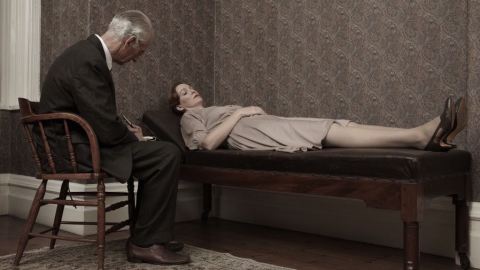I Was Misdiagnosed and Given Antipsychotics. Thanks, Gender-Biased Psychiatry!

“Has anyone ever mentioned ADHD to you?” my therapist asks at the end of our first session, tilting her head and looking intently. “No, I thought that was just for hyper kids,” I respond, confused and woefully ignorant. “Maybe that’s something you should look into.”
I’ve spent the last 10 years with the diagnosis of bipolar II, a serious mood disorder characterized by periods of depression and hypomania and a modern catch-all slang term for crazy. In college, my deepening depression and Woody Allen-level anxiety led me to seek help. I’d been to psychiatrists before, in high school, where I was a lonely and isolated girl prone to wearing hoodies. Emo and bookish, the diagnosis was depression, which I was treated for, but not alleviated from. But now sophomore year of college was catching up with me and I needed a good doctor I could talk to, trust.
I saw the psychiatrist for an hour, and she asked me a series of questions, checking off my answers. At the end of the hour she said, “Well, you’re bipolar,” the way a mechanic might tell you your carburetor needs a fixin’. She wrote me a cornucopia of prescriptions, a who’s who of antipsychotics, anticonvulsants, and benzodiazepines. I walked away with my party favors and began a regimen I would later learn was for people actively, violently psychotic.

What I didn’t know was that my depression and anxiety were actually symptoms of a different disorder. Unlike boys, who are three times more likely to be diagnosed with ADHD, girls are more likely to internalize their frustrations. Thinking that their underachievement and difficulties are their fault and a personal failure, a girl with ADHD will develop a poor self-concept and develop depressive or anxious symptoms. Moreover, the criteria for diagnosing the disorder are bias toward boys — girls often go undiagnosed, or in my case misdiagnosed.
For the next several years, my life was like riding a broken bicycle. I pedaled as fast as I could, tried to get ahead, or at least not fall. I was giving 100 percent effort, and could barely make it out of the driveway. I wondered what was wrong with me, why I couldn’t live up to my potential. Four psychiatrists and a dozen or so therapists later, an astute therapist led me to a new psychiatrist who diagnosed me as ADHD. I got off of the antipsychotics and on a stimulant called Vyvanse, and the results have been life-changing. I’m focused, productive, less impulsive, and have a newfound self-confidence. I feel like the me I always knew was there, somewhere, waiting for the barriers to be taken down so she could run free. I’m finally living up to that potential I kept hearing about.

It is my hope that in time my story becomes more unique, a throwback to a bygone era. Unfortunately, I am not an outlier presently, and even as more women are being properly diagnosed, there are still doctors who will assume a mood disorder is present before they look for ADHD. Perhaps the solution is for everyone, regardless of age or gender, to educate themselves on what ADHD looks like. If we are all collectively aware, there becomes a societal pressure put on doctors to wake up and be attentive, informed, and responsible. After all, I really want that retro story that matches up with people who had lead paint in their homes and didn’t know cigarettes were unhealthy. Let’s move forward, psychiatry. You can do so much better.





